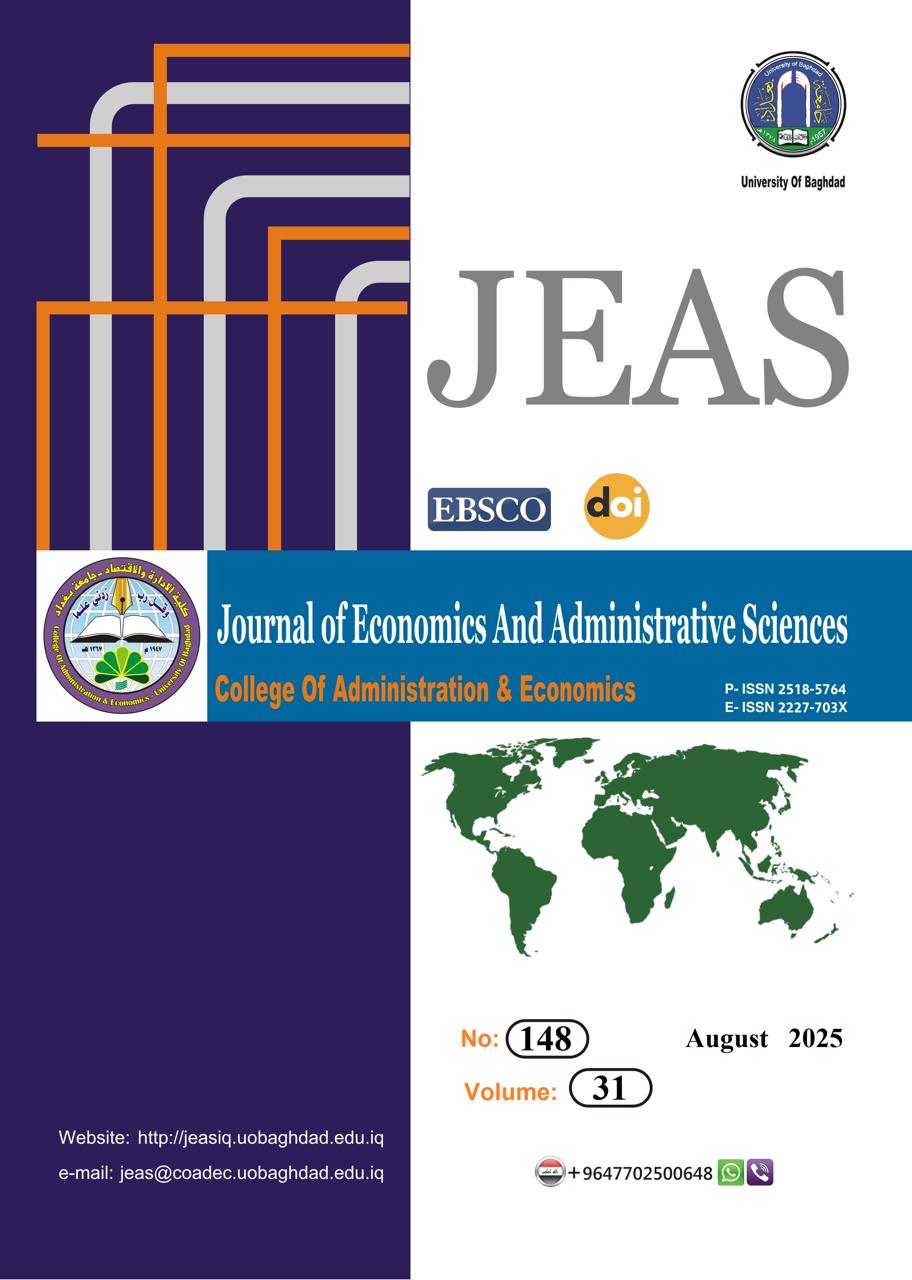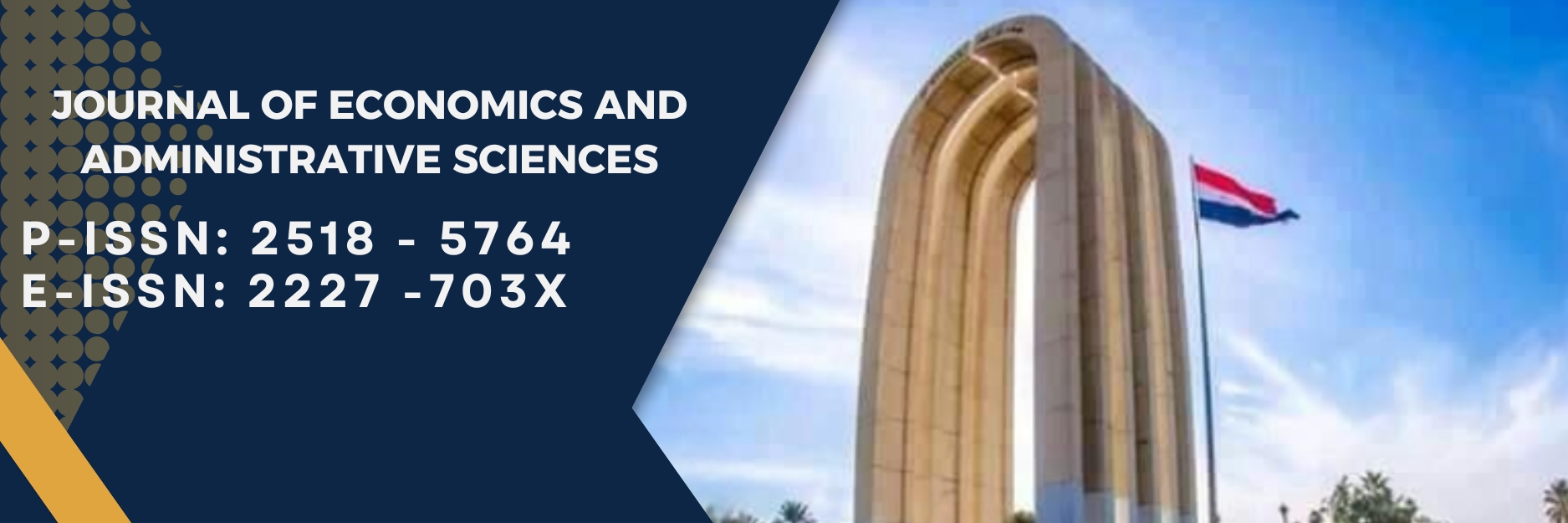Using Convolutional Neural Networks to Estimate Missing Values in Univariate Time Series Data
DOI:
https://doi.org/10.33095/j87hvg90Keywords:
Convolutional Neural Networks, univariate time series, Missing value, Deep learning.Abstract
In this research, deep neural networks (CNNs) were used to estimate missing values in a univariate time series dataset and compared with DES/Holt and (SVR) estimation methods to determine their accuracy in handling missing values in the dataset. These missing values directly affect the process of building mathematical and statistical models, affecting the accuracy of the final results that enable us to make the right decisions in the future. The presence of missing values in the dataset is due to problems that occur during sampling, such as a malfunction in the measuring device, security attacks, or communication errors. The results indicated that the CNN model outperformed other methods by using a simulation approach that generated data randomly. Three different sample sizes (60, 100, 300) were selected with missing data percentages of (10%, 15%, 20%) for each, meeting the "missing at random" (MAR) condition. The Box-Jenkins MA (1) model was applied once with β = 0.5 and again with β = 0.9. The accuracy of the estimation methods was evaluated using the accuracy criteria mean sum of squared error (MSE) and root mean squared error (RMSE).
Downloads
References
Ragheb Abdulrazak Adlia, A., & Hatim Mahmoud, A. (2024). The Role of Artificial Intelligence Techniques in Enhancing Project Completion Speed: A Study on Using LSTM Networks for Predicting Delay Times. Journal of Economics and Administrative Sciences, 30(142), 197-219. https://doi.org/10.33095/n7rfbg91
Ahn, H., Sun, K. and Kim, K. P. (2022). Comparison of missing data imputation methods in time series forecasting. Computers, Materials & Continua, 70(1), pp. 767–779.
Al-Milli, N. and Almobaideen, W. (2019). Hybrid neural network to impute missing data for IoT applications. in 2019 IEEE Jordan International Joint Conference on Electrical Engineering and Information Technology (JEEIT). IEEE, pp. 121–125.
Al-Mohana, Firas Ahmed, and Saleem, N. (2018) Comparison Some Estimation Methods Of GM(1,1) Model With Missing Data and Practical Application. Journal of Economics and Administrative Sciences, 24(103), 420. https://doi.org/10.33095/jeas.v24i103.121
Burkov, A. (2019). The hundred-page machine learning book. Quebec city, canada: Andriy Burkov Quebec City, QC, Canada.
Cadenas, E., Jaramillo, O. A. and Rivera, W. (2010). Analysis and forecasting of wind velocity in chetumal, quintana roo, using the single exponential smoothing method. Renewable Energy, 35(5), pp. 925–930.
Caillault, É. P., Lefebvre, A. and Bigand, A. (2020). Dynamic time warping-based imputation for univariate time series data. Pattern Recognition Letters, 139, pp. 139–147.
Cerqueira, V. and Roque, L. (2024). Deep Learning For Time Series Cookbook use PyTorch and Python recipes for forecasting, classification, and anomaly detection.
Chaudhry, A. et al. (2019). A method for improving imputation and prediction accuracy of highly seasonal univariate data with large periods of missingness. Wireless Communications and Mobile Computing, 2019(1), p. 4039758.
Chhabra, G. (2023). Comparison of imputation methods for univariate time series. International Journal on Recent and Innovation Trends in Computing and Communication, 11, pp. 286–292.
Contractor, S. and Roughan, M. (2021). Efficacy of feedforward and LSTM neural networks at predicting and gap filling coastal ocean timeseries: oxygen, nutrients, and temperature. Frontiers in Marine Science, 8, p. 637759.
Chatterjee, A. et al. (2025) ‘Supervised Anomaly Detection in Univariate Time-Series Using 1D Convolutional Siamese Networks’, IEEE Access.
Ding, Z. et al. (2020). Comparison of estimating missing values in iot time series data using different interpolation algorithms. International Journal of Parallel Programming, 48(3), pp. 534–548.
Flores, A., Tito, H. and Silva, C. (2019). Local average of nearest neighbors: Univariate time series imputation. International Journal of Advanced Computer Science and Applications, 10(8), pp. 45–50.
Gazzola, G. and Jeong, M. K. (2021). Support vector regression for polyhedral and missing data. Annals of Operations Research, 303(1–2), pp. 483–506. doi: 10.1007/s10479-020-03799-y.
Heaton, J. (2015a). AIFH, volume 3: deep learning and neural networks. Journal of Chemical Information and Modeling, 3.
Heaton, J. (2015b). Artificial Intelligence for Humans, Volume 3: Neural Networks and Deep Learning. sl: Heaton Research. Inc.: Chesterfield, UK.
Honghai, F. et al. (2005). A SVM regression based approach to filling in missing values, in International Conference on Knowledge-Based and Intelligent Information and Engineering Systems. Springer, pp. 581–587.
Kim, T., Ko, W. and Kim, J. (2019).Analysis and impact evaluation of missing data imputation in day-ahead PV generation forecasting. Applied Sciences, 9(1), p. 204.
Li, Q. et al. (2009). The investigation and application of SVC and SVR in handling missing values. in 2009 First International Conference on Information Science and Engineering. IEEE, pp. 1002–1005.
Lim, B. and Zohren, S. (2021) ‘Time-series forecasting with deep learning: a survey’, Philosophical Transactions of the Royal Society A, 379(2194), p. 20200209.
Saad Mahdi, W., & A. Mohammed ALmohana, F. (2022). A Comparison of a Radial Basis Function Neural Network with other Methods for Estimating Missing Values in Univariate Time Series. Journal of Economics and Administrative Sciences, 28(134), 134-146. https://doi.org/10.33095/jeas.v28i134.2426
Niako, N. et al. (2024). Effects of missing data imputation methods on univariate blood pressure time series data analysis and forecasting with ARIMA and LSTM. BMC Medical Research Methodology, 24(1), p. 320.
Phan, T.-T.-H. (2020). Machine learning for univariate time series imputation. in 2020 International Conference on Multimedia Analysis and Pattern Recognition (MAPR). IEEE, pp. 1–6.
Rachmat, R. and Suhartono, S. (2020). Comparative Analysis of Single Exponential Smoothing and Holt.s Method for Quality of Hospital Services Forecasting in General Hospital. Bulletin of Computer Science and Electrical Engineering, 1(2), pp. 80–86.
Ren, R. et al. (2018) ‘Deep convolutional neural networks for log event classification on distributed cluster systems’, in 2018 IEEE international conference on big data (big data). IEEE, pp. 1639–1646.
Saeipourdizaj, P., Sarbakhsh, P. and Gholampour, A. (2021). Application of imputation methods for missing values of pm10 and o3 data: Interpolation, moving average and k-nearest neighbor methods. Environmental Health Engineering and Management, 8(3), pp. 215–226. doi: 10.34172/EHEM.2021.25.
Sahu, N. (2023). Mathematics for Machine Learning_ A Deep Dive into Algorithms.
Savarimuthu, N. and Karesiddaiah, S. (2021). An unsupervised neural network approach for imputation of missing values in univariate time series data. Concurrency and Computation: Practice and Experience, 33(9), pp. 1–16. doi: 10.1002/cpe.6156.
Shaikh, T. A., Rasool, T. and Lone, F. R. (2022). Towards leveraging the role of machine learning and artificial intelligence in precision agriculture and smart farming. Computers and Electronics in Agriculture, 198, p. 107119.
Yang, B. et al. (2022). ST-FVGAN: filling series traffic missing values with generative adversarial network. Transportation Letters, 14(4), pp. 407–415.
Downloads
Published
Issue
Section
License
Copyright (c) 2025 Journal of Economics and Administrative Sciences

This work is licensed under a Creative Commons Attribution-NonCommercial-NoDerivatives 4.0 International License.
Articles submitted to the journal should not have been published before in their current or substantially similar form or be under consideration for publication with another journal. Please see JEAS originality guidelines for details. Use this in conjunction with the points below about references, before submission i.e. always attribute clearly using either indented text or quote marks as well as making use of the preferred Harvard style of formatting. Authors submitting articles for publication warrant that the work is not an infringement of any existing copyright and will indemnify the publisher against any breach of such warranty. For ease of dissemination and to ensure proper policing of use, papers and contributions become the legal copyright of the publisher unless otherwise agreed.
The editor may make use of Turtitin software for checking the originality of submissions received.


























